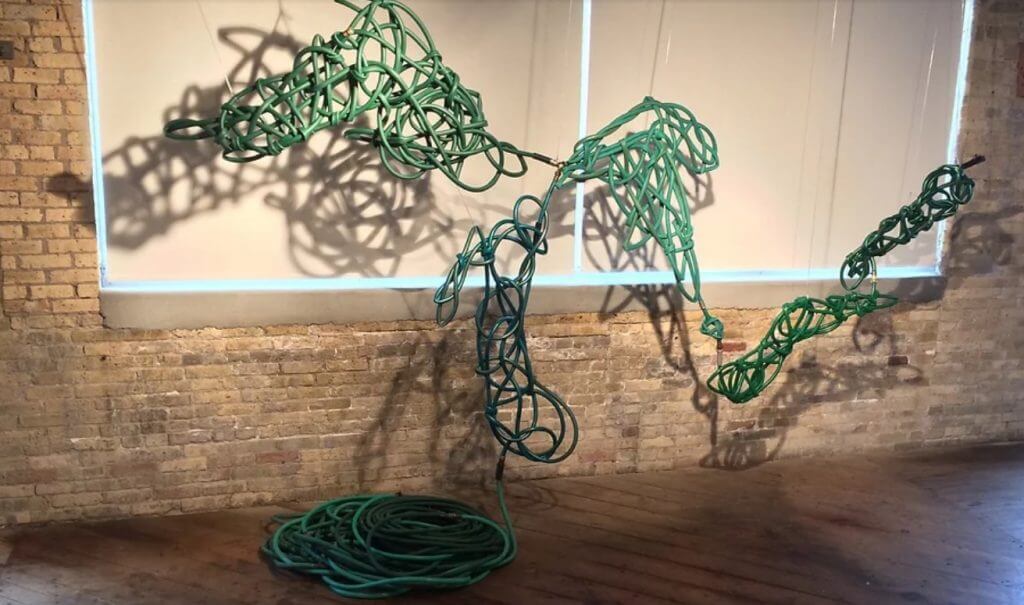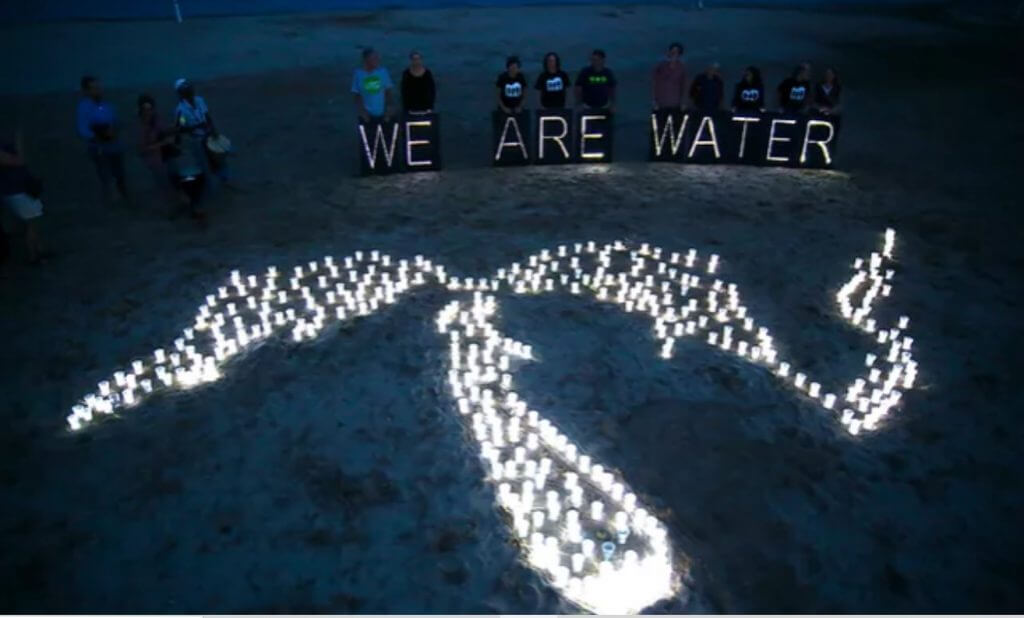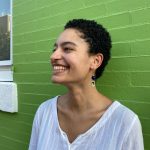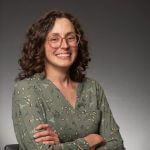Melanie Ariens
Milwaukee, WI
Melanie facilitates water-inspired art experiences for local leaders, scientists, students, and community groups as the artist in residence for the Milwaukee Water Commons. She has grown the multicultural We Are Water event and shaped the Water School program with unparalleled love and commitment. Her art with message transcends divides to bring people together around the water-people connection and she has been a tireless advocate for local waters.
Melanie was honored as a River Hero at River Rally 2022.
This interview was conducted by Carly Schmidt on February 18, 2022. Learn more about Melanie’s work at https://ariensmelanie.wixsite.com/.
What does it mean to be an environmental artist in residence and how did you come to connect your art to water?
I have always been an artist. My parents said that they knew when I was five years old. I always appreciated that about them because, despite being a blue collar family, they always supported and encouraged my artwork. We were an outdoor family and we spent a lot of time at a cottage in Northern Wisconsin. Growing up I got to see the Milwaukee River go through a massive restoration. When I was young, it was not a place people sought out, but my parents took me canoeing around the harbor. There was always a connection and appreciation for our waterways.
Then, when I went to college, my work was environment-based. I studied acid rain and overfishing. But it was when I became a mother that I got heavily involved in local environmental movements. When my kids both went to school full-time, I turned to my art practice and thought about how I could use my work to forward environmental issues that were near and dear to me. I have lived along the Great Lakes my whole life. In Milwaukee, we take for granted that we live next to the world’s greatest freshwater resource. When you look at conditions globally you realize that we’ve got to do a better job taking care of this finite resource. We’ve worked really hard to restore our waterways. We are now embarking on the last big area of concern. I am also a science geek and I felt that, if my artwork was going to address water issues, I needed to let science and research shine through. Good science is easy to find here in Milwaukee because we have the School of Freshwater Sciences, the Global Water Center, and many great NGOs working on water issues.

How does art show up in your work?
I like sticking art in places that people don’t expect to see it. I set up a shrine to water at an event and that’s how I was introduced to Milwaukee Water Commons, back before it had a name. The co-founders of Milwaukee Water Commons always saw the value of art and its power to capture people’s hearts differently than a pamphlet or brochure can. Art is a powerful communication tool. It grabs you in a different way and moves people into action. They can see something fun or funny or joyful in an art installation and begin to think about an issue differently.
For example, I have a piece called Hosed, which is the Great Lakes made out of garden hoses. There’s a section in Lake Michigan representing the Great Lakes water diversions. This was after the Great Lakes Compact between the US and Canada, in which all communities agreed to keep water in the watershed. That was how I got this installation idea to show people that if we don’t resist these diversion proposals, we’re hosed.
Art shows up in several different ways at Milwaukee Water Commons, too. Whether I’m doing visual note taking in meetings or coordinating a group project for the Water School, art is always involved in some way.
You have been coordinating the annual We Are Water event for a number of years. What is that event like and what value does it bring to the community?
Art is so valuable, whether it’s visual or spoken word, or music. The goal of the We Are Water event is to bring people together, right at the water’s edge, to celebrate the water in community with each other. The result is a collective experience that is very powerful. When Milwaukee Water Commons finished the first year of Water School programming, we wanted to celebrate and do something special for the community. It was an opportunity for me to throw out an idea I had about creating an image of the Great Lakes in the sand with submersible lights. The Native American community was involved, as well as speakers and musicians. As soon as the event was over, people told us that we were going to have to host one every year. We’ve hosted seven total.

It is primarily a celebratory event. One year our theme was “Every Culture Has Water Stories.” People came out from the many cultural groups in Milwaukee and told stories from their culture. Another year’s theme was Great Lakes, Our Home; so I made a house from copper tubing and we spelled out “Home” in several different languages. It is different every year and the goal is to celebrate Milwaukee’s diversity and our special place in the Great Lakes. One of my favorite things is working with other Milwaukee creatives to make this event happen.
When you think about your career as an artist, what gives you the most pride and hope for the future?
I love doing what I do and I’ve done so many different kinds of projects, from designing manhole covers for the City of Milwaukee to coordinating the We Are Water event. I have been on a project team with the sewage district for a few years now as an artist working on green infrastructure. I enjoy work that is at the edge of my comfort zone. It gives me the opportunity to put art in places where people don’t expect it, like a boat dock or underpass.
I also love working with youth and empowering them to be clean water leaders. I’ve done a watermarks project where we work in both the science and the art room at a local middle school. That work led to designing a mural that we collectively painted under I-94. To have kids be part of that and see themselves as water leaders is incredible. It makes them feel that the work is important and has value.
I think that people are beginning to see the value in art and pay artists accordingly. I always say that, once I’m at the point where I’m putting paid on something, the hard work is done. It’s the planning, research, and coordination that takes the most effort. But I pretty much live and breathe my work, whether I’m doing a little one-on-one project or a public art project. It has become a way of life. So I’m a big advocate for artists getting paid for what they do and the value that they bring.
What have you learned about the value of art in your career?
Working with the community on projects that celebrate water is something that truly unites us all. We all depend on water. It’s hard to think of something more important than the care and keeping of water and each other, making sure we all have access to a healthy water source, and keeping our communities well. We need water, but also spirituality and connection. Artists have a special role in fostering that connection.







